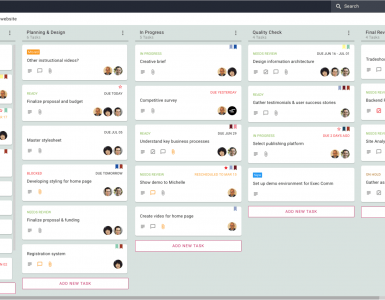How to deal with international clients. When you’re a freelancer, the opportunities are endless. You can work with clients from all over the world, right from your home studio.
Glamorous, huh?
But, there are some considerations to bear in mind when you’re dealing with international clients.
International clients come with their own set of unique problems, but if you read our guide and you’ll navigate the pitfalls, no problem.
1.Bureau de Change
If you’re dealing with other countries you’ll be dealing with different currencies too. This has important implications for your work and you should always check the exchange rates before you embark on a project.
XE is a trusted site for accurate exchange rates get it bookmarked. Remember that the exchange rate won’t stay the same, so make sure you track it, otherwise, you might find yourself out of pocket.
2. Get your taxes in order.
As a freelancer, you already know you need to be responsible for your own taxes. However, did you know there could be different tax implications depending on which country your client is based in?
Tax and trade agreements differ widely between countries, so we recommend getting some professional advice from an accountant or tax professional before you take on work from international clients.
Advice probably won’t come free, but in the long run, it could save you money. US creatives should check the IRS website, UK creatives can get advice from HMRC.
3. Get paid.
This is the most important part of being a freelancer, but sometimes working with global clients can stir up a whole host of payment problems. Make sure you understand how you are going to be paid, when and if any extra charges will be incurred.
Transferring money internationally via bank transfer can come with extra charges and take longer than usual, so it really is worth checking beforehand.
PayPal is still the easiest and quickest way to send money internationally. It’s safe, widely recognized, and could be cheaper than other methods.
4. Check the time.

If your client is located in a different country, they’re likely to be in a different timezone to you. You need to research this and see if you can still keep up work commitments across different time zones.
If there’s a difference of an hour or so, it probably won’t affect your workflow that much.
However, if you’re on different continents you’ll have to make allowances for the time difference. It can make projects on a tight deadline more difficult because you could be working hours ahead or behind your client.
This means you may not receive responses to your emails until the next day, which could potentially hold up the project. Scheduling phone or video calls could be difficult it will be up to you to conform to your client’s working hours, not the other way around.
Make sure you can complete the project to the proposed deadline this means their time zone, not yours.
5. Lost in translation.
If you’re working with a client that doesn’t speak your language or is based in an unfamiliar country, you may need to work to their cultural norms and expectations.
There may be different business lingo or industry terms, and they may do things slightly differently from what you’re used to. It’s really important to set out a clear definition and expectations of the project before you submit work to the client if this is the case.
Drawing up a contract or keeping a written record of all communications can help with this scenario. If you have different first languages, keep your communication clear and to the point, don’t use slang, sarcasm, regional dialect, metaphors, or anything that could be misinterpreted by a nonnative speaker.
6. Economics 101.
If you’re planning on dealing with countries that have emerging economies, bear in mind that you might be priced too high for them.
You may have to rethink your hourly rate in order to secure clients or avoid those countries altogether.
7. Communication.
You may find that certain lines of communication are off-limits when working with clients in different countries.
For example, a meeting in person may be impossible (unless you’re working for someone with a generous expenses account!). Phone calls may be more difficult too because of the cost of international calling.
Don’t forget timezone and language restrictions too. Make sure that the service you offer can be delivered 100% remotely.
Ready to get hired? At Twine, we have dozens of top-quality jobs being posted each and every day. From design to marketing, development to copywriting – there’s a job ready for your skills. Join the marketplace of creative talent here.








